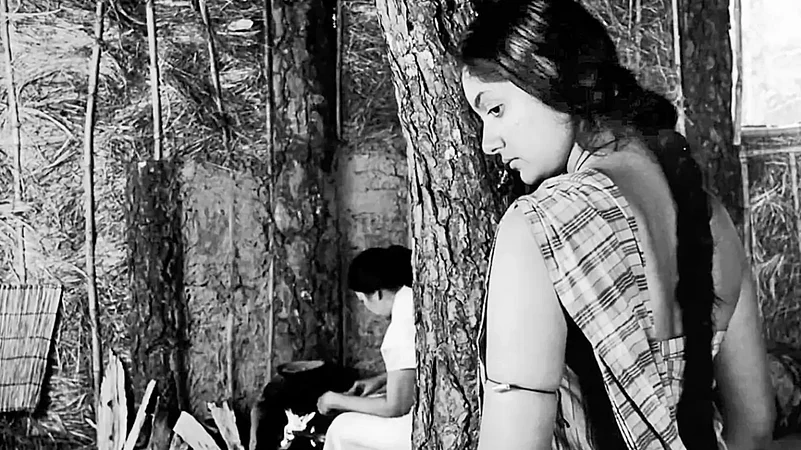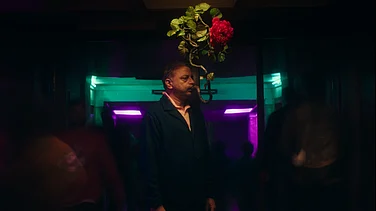In June 2010, when I was attending the Film Appreciation course at the Film and Television Institute of India (FTII), Pune, avant-garde film director Mani Kaul came for a valedictory lecture and interacted with us. The coordinator of the course, Professor Suresh Chabria, introduced Mani as ‘‘the best film director of our time.’’ Many of us in the batch had not seen Kaul’s movies as they were not easily available. I remember during our course his documentary Siddheshwari was screened at the Film Archives auditorium and we were mesmerised by its form and aesthetics. It felt like we were watching a long poem gently unfold on celluloid.
I wanted to talk with Mani about his movies but unfortunately, he passed away a year later in Gurgaon. Recently, while watching his movie Duvidha (Dilemma) again, I remembered a long meeting which I had, when he was the creative director of Osian Film Festival in Delhi, in 2006. I was doing my Ph.D research at Jawaharlal Nehru Uiniversity (JNU) at that time and Mani talked to me like a friendly teacher. Besides being an auteur, he was a great teacher as well.
During our conversation at a hotel lobby in Delhi, he remarked self-depreciatingly, “Mujhse zyada extreme mein bahut kam log gaye, jitni bhi filmein banayi saari flop” (Very few people went to the extreme I did; all of my films flopped). It’s a pity that his films didn’t get box-office release but they won national and international awards and were screened at film festivals worldwide. With the digital revolution his films have become available online for interested viewers. Many young film-makers from FTII swear by his name. Avant-garde contemporary film-makers like Amit Dutta, Gurvinder Singh and Pushpendra Singh’s movies are influenced by his aesthetics and minimalistic style.

Mani Kaul is hailed as a pioneer of the parallel cinema movement in India. After graduating from the Film Institute, Pune, where he was ace director Ritwik Ghatak’s favourite pupil, he directed Uski Roti (1969) based on a short story of the same name by Hindi fiction writer Mohan Rakesh. It is known for its formalist experimentation in New Indian Cinema. Later, he made Ashad ka Ek Din (1971) based on Rakesh’s eponymous play, and Duvidha (1973). His first colour feature film, Duvidha, which is now fifty years old, asks for critical engagement afresh, particularly when Bollywood is witnessing the emergence of a new kind of woman on screen. Duvidha is adapted from famous Rajasthani writer Vijaydan Detha’s folk tale of the same name.
It’s interesting to note that almost all of Kaul’s feature films are based on Hindi literature. He said, “I think and write in Hindi only.” Among his earlier three films named above, Duvidha is the most accomplished and nuanced work that he directed. The film revolves around a newly-wed young woman named Lachhi (Raisa Padamsee), whose husband (Ravi Menon) leaves for a business tour without consummating their marriage. The son of a Baniya (merchant), he is more concerned about the khata-bahi (ledger) than the beauty of his bride. In the husband’s absence, a ghost impersonates the husband and starts living with the bride. Although enamoured by the young beauty, the ghost doesn’t hide his identity from her. Lachhi doesn’t resist the relationship. Does she have any agency? In the course of time, a child is born to her and the ghost. Subsequently, the husband also returns to the haveli. Finally, in accordance with the justice meted out by a shepherd, the ghost is imprisoned in a leather bag and thrown into a well and thus the dilemma is resolved. Is it really resolved though? No one asks about the wishes and desires of the woman. The film is a feminist tale about agency and the choices available to women. Through its unique non-linear narrative style, the film treads between the real and the imaginary. In the short story, Detha writes, “Kahin ye dulhan ke mann ka hi bhoot tho nahi tha, jo sakar roop dhar kar prakat hua?” (Was the ghost the bride’s imagination?).

Speaking before the screening of Siddheshwari in his characteristic humorous style, Mani had remarked, ‘‘If you don’t get a few points, don’t fret over it. It’s not that important.’’ Mani’s story-telling technique always asks for the audience’s active participation. He emphasised that a movie is an amalgamation of image and sound and should be read in that way only.
We find women protagonists waiting in different time/space in three of his movies. Be it Balo (Uski Roti), Mallika (Ashad ka Ek Din) or Lachhi (Duvidha). When I asked him about the ‘waiting’ in his films he said, ‘‘This waiting takes us away from experiential/empirical time, when even one minute can be an hour.’’ Later, he told me when he was learning classical music (he was an accomplished Dhrupad singer) that he used to feel this very strongly in the interval of Sam and Visham.
In Mani’s films, landscape is very important. Duvidha was shot in Detha’s village, Borunda (Rajasthan). Born in Jodhpur, Mani was familiar with this landscape. Also, he was very much immersed in Indian poetics and aesthetics, in particular, he emphasised dhwani (sound), which gets reflected in his movies. While seeing Duvidha, the way he captures the beauty of the veiled Lachhi (Raisa Padamsee) in the palanquin, the ancient Maithili court poet Vidyapati comes to mind, “Sundari tu mukh mangal data” (O, beautiful lady your face is auspicious). It has been said that the images in this film resemble miniature paintings. Talking about the colour (red) and form (object-landscape), film director and Mani’s colleague Kamal Swaroop recalls famous painter—and Raisa’s father—Akbar Padamsee calling him Mani’s ‘Guru’. In fact, during 1969-72, Mani Kaul and Kumar Shahani, who made Maya Darpan (1972) based on Nirmal Verma’s short story, were part of Padamsee’s Inter Art Vision Exchange Workshop in Bombay. Padamsee lent his support to the movie and it was financed by Film Finance Corporation of India (FFC). Here, it’s pertinent to note that the cinematography of this movie was done by multi-faceted artist Navroze Contractor who passed away recently in a road accident.

Mani talked to me about the influence of film-makers like Robert Bresson, Andrei Tarkovsky and artist Henri Matisse. He said, “I still learn a lot from Ritwik da. He took me out of the neorealist stream.” Despite various influences, the ‘space’ in which Mani created his art is very personal, which can be felt in every shot and frame of his films. He emphasised ‘svabhava’ (nature/temperament). Mani’s films are not only influenced by painting but by literature, music and architecture too. Even in his later phase, he made a film on famous Hindi writer Vinod Kumar Shukla’s Naukar ki Kameez (The Servant’s Shirt) and was planning to make Khilega toh Dekhenge (Will See When it Blossoms) into a movie. He also wanted to direct Detha’s story ‘Charandas Chor’ but Shyam Benegal had already adapted it into a movie.
Mani always struggled to raise funds for his movies. Even today, when we talk to young independent film-makers they too bemoan the lack of resources. In a recent interview, Pushpendra Singh, who made Lajwanti (The Honour Keeper) and Laila aur Satt Geet (The Shepherdess and the Seven Songs), said to me, “We can expand on our style and vision, but our aesthetics are determined by the constraints in which we work.” Mani’s films are testament to those constraints; however, he aspired to create the best out of meagre means. When Duvidha was released, renowned film-maker Satyajit Ray was very critical of the movie in his essay titled ‘Four and a Quarter.’ However, fifty years later, its aesthetics and form are still discussed among young film-makers and millennial audiences alike. Singh said he too wanted to make a film on Duvidha but Mani had already made the movie, so he chose Detha’s ‘Kenchuli’ to make Lajwanti. He called it an ode to Mani Kaul.
(Views expressed are personal)
Arvind Das is a journalist and researcher


























